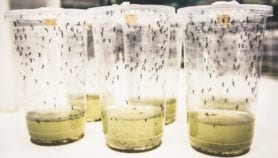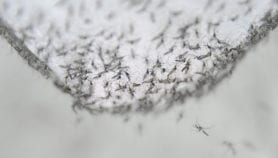By: Wagdy Sawahel
Send to a friend
The details you provide on this page will not be used to send unsolicited email, and will not be sold to a 3rd party. See privacy policy.
Eric Messens, a professor of plant molecular genetics at Flanders Interuniversity Institute for Biotechnology at Ghent University, Belgium, warns however that some scorpion toxins previously thought to affect only insects can also affect mammals.
He told SciDev.Net that detailed studies must be conducted to see whether the toxins produced by the GM plants affect human health.
Another concern about GM oilseed rape is that insects or the wind could carry pollen with foreign genes into non-GM oilseed rape crops or related species.
“Discussions about biosafety should be based on the results of practical case studies and not on worst case scenarios,” says Gerhard Schwarz, a researcher at the Germany-based EpiGene company.
“Our results showed that the gene flow by pollen dispersal can be brought under control and does not lead to a biological catastrophe,” Schwarz told SciDev.Net.
GM crops can therefore co-exist with conventional and organic farming, he added.
Link to abstract of paper in Plant Cell Report
Reference: Plant Cell Report doi: 10.1007/s00299-005-0967-3
Link to abstract of paper in European Journal of Agronomy
Reference: European Journal of Agronomy doi: 10.1016/j.eja.2005.04.002












